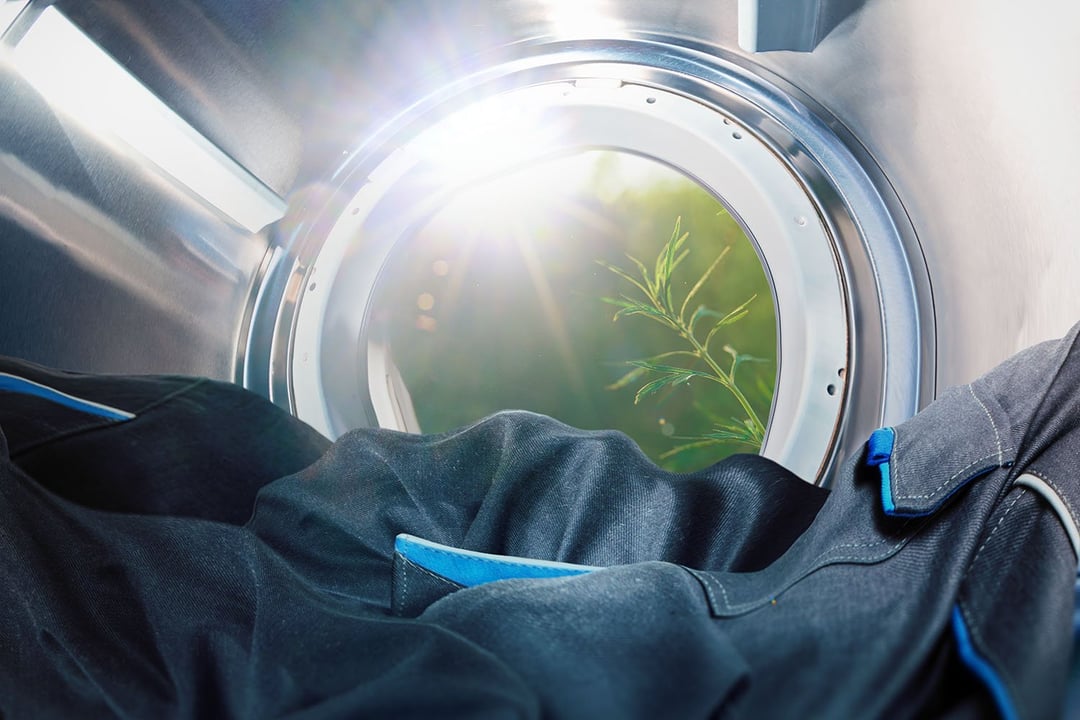As companies around the world make the shift towards becoming more environmentally aware, sustainability is a hot topic. But sustainability isn’t just about awareness: it’s about following through.
Protective garments must undergo a lengthy and complicated supply chain before they are fitted for the first time. At TenCate Protective Fabrics, we are actively searching for more sustainable solutions together with our supply chain partners wherever possible. We talk about this process in our lifecycle analysis – the ‘Cycle of Care’.
That said, with sustainability comes trade-offs. We want to improve our environmental footprint, but we must uphold the highest levels of safety while maintaining economic viability for our business.
Below we’ll take you on a journey of the four main areas in the protective clothing supply chain, and the possibilities and challenges when it comes to improving sustainability.
1. Raw Materials as Sustainable
Becoming more sustainable starts with examining our choice of raw materials. Today this is the area where we believe we can have the biggest contribution to sustainability. That’s why we are working hard on expanding our Ecogreen technology platform across all our product ranges. The following fibres are important parts of this technology platform:
- TENCEL™ Lyocell fibre is fast becoming a replacement for cotton as it offers better moisture management. Made from wood pulp, it uses 95% less water in its production compared to cotton, and doesn’t require pesticides.
- Recycled polyester is also a great alternative. It’s a dynamic, affordable, and strong substance and comes close to virgin polyester.
Selecting more sustainable raw materials also means choosing fibres that are durable when it comes to industrial laundering. That’s why we can’t just use any fibre that has more sustainable attributes. We must still ensure the highest levels of safety after repeated laundering, hence the choice of the fibres mentioned above.
2. Production Process Optimisation
When it comes to sustainable production processes for our fabrics, this can be achieved in several ways. For instance: reuse of water, less and greener energy usage, and smarter choices in terms of transport. While these options exist, our capacity to make use of them is limited due to low market acceptance of the costs these incur.
Another way in which we can optimise the production process is to reconsider the kinds of dye we use on fabrics. Nowadays, a sustainable option is natural dye. However, we need to carefully consider our usage of natural dye, as depending on how it is applied to the fabric, it may not be as fire-retardant as chemical dye, therefore compromising safety.
3. Lifecycle Maximisation
Sustainability is not just about production - it’s about lifecycle, too. In order for wearers to remain comfortable, they should be able to switch up garments regularly and launder them frequently to keep them in good shape. To make this possible, we produce fabrics that are able to withstand frequent industrial washing, providing maximum durability. The longer garments can be used, the less waste we produce.
4. Circular Approach to Lifecycle Sustainability
The ‘circular economy’ is a buzzword nowadays. As the name suggests, it proposes working in a circular manner - in our case, embedding fabric reuse and recycling at the heart of our sustainable business practices.
However, we have two main challenges when it comes to the circular economy:
Firstly, it’s important for us to achieve EU regulations and norms alongside the fire-resistant properties required for our fabrics. Therefore, we must use intimate blends, as they are currently the only way to meet all the necessary requirements. Using a blend means that we are unable to bring the fibres back to their original state - we cannot disentangle it in order to recycle it. In this scenario, we must prioritise safety over sustainability.
Secondly, let’s say you could disentangle our blends for recycling. In doing so, you’d lose part of the original property of the fibres. They would get weaker and weaker, defeating the purpose of having protective, fire-resistant and durable fabric. This means that fibres used in our blends must fulfil minimum performance requirements so they can withstand all conditions and protect the wearer.
The circular economy idea is important to address and work towards, but it is not something we are able to put into practice as protective fabric producers - at least not yet.
Every industry has different requirements and challenges when it comes to sustainability. As protective clothing suppliers, the safety of the wearer must always be at the forefront of our minds.
Ultimately, there are still challenges to overcome when it comes to improving sustainability while maintaining the highest levels of user safety and comfort. In the meantime, at TenCate Protective Fabrics we will strive to do what we can to be as sustainable as possible while not compromising the highest standards of quality for our protective fabrics.



![6 Industry trends [EN]](https://eu.tencatefabrics.com/hs-fs/hubfs/EU%20-%20Images%20website/EU%20-%20Mock-up%20nieuwe%20afmetingen/6%20Industry%20trends%20%5BEN%5D.png?width=170&name=6%20Industry%20trends%20%5BEN%5D.png)




.png?width=399&name=Risk%20management%20for%20PPE%20clothing%20in%20the%20EV%20and%20battery%20industries%20(5).png)
